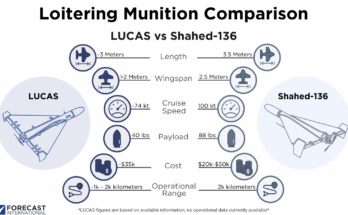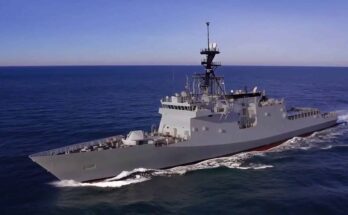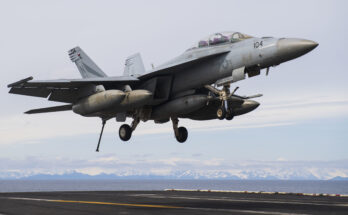
The future of U.S. military rotorcraft took another step toward tiltrotor technology following Bell’s recent down-select to develop a high-speed, hovering X-plane design for the Pentagon. As part of the joint Defense Advanced Research Projects Agency (DARPA) and U.S. Special Operations Command (SOCOM) project, Bell announced last week that it was the sole company moving into Phase 2.
Now tasked with finalizing a design and building a demonstrator for certification, Bell will rely on a novel and revolutionary Stop/Fold rotor system to meet the Speed and Runway Independent Technologies (SPRINT) program requirements of flying 400 to 450 knots while maintaining the ability to move a payload from unprepared surfaces.
Confidence in Tiltrotor Tech
Bell’s selection signals the Defense Department’s growing confidence in tiltrotor design for future vertical/short take-off and landing (V/STOL) platforms. Phase 1B of SPRINT featured two divergent approaches: Bell’s folding tiltrotor and Boeing/Aurora Flight Sciences’ blended wing-body concept. DARPA’s down-select appears to favor the tiltrotor philosophy—an indication that U.S. defense planners see it as the more mature and adaptable approach.
The SPRINT award adds to a growing portfolio of U.S. defense aviation programs in which Bell tiltrotors are central. The V-22 Osprey is operated across the Marine Corps, Air Force, and Navy, and the forthcoming MV-75, selected as the U.S. Army’s Future Long Range Assault Aircraft (FLRAA), will enter service with the 101st Airborne Division before the end of the decade. By then, tiltrotor aircraft will be flown by every major U.S. service branch.
Pushing the Envelope
Bell’s SPRINT X-plane demonstrator will push the boundaries of tiltrotor performance, particularly with respect to range and speed. The Bell/Boeing V-22 Osprey boasts a max cruise speed of 275 knots, and the V-280 FLRAA demonstrator has already reached 305 knots. To exceed 400 knots for SPRINT, Bell will likely focus on mating jet propulsion with its folding rotor architecture.
Although SPRINT may not lead to a production aircraft, the technologies and lessons learned will inform next-generation platforms. Insights from FLRAA and SPRINT could shape the U.S. Navy’s Future Vertical Lift (Maritime Strike) initiative, which aims to begin replacing ship-based MH-60R/S helicopters in the next decade.
Implications and Momentum
Overseas, another rotorcraft venture is considering competing advanced rotorcraft design concepts. Bell/Leonardo’s tiltrotor offering is pitted against Sikorsky’s X2 coaxial technology and Airbus’ pusher-prop Racer for the multinational NATO Next Generation Rotorcraft Capability (NGRC) effort.
A NATO decision in favor of tiltrotors to replace nearly 1,000 medium multi-role helicopters between 2035 and 2040 could establish tiltrotors as the global industry standard, forcing manufacturers to pivot toward tiltrotor designs to remain competitive.
Back in the U.S., momentum for exploring tiltrotor capabilities appears robust, even as broader military aircraft programs face cuts. SPRINT funding is growing, a sign of institutional support for research work.
DARPA’s X-plane program received $13 million in FY24 and $42 million in FY25. For FY26, the Pentagon has requested $55.2 million—a nearly 30 percent increase from the previous year.
For now, the Pentagon’s commitment to the development of high-speed rotorcraft appears firm. Defense leaders view the promising capabilities of advanced rotorcraft as essential to the success of future air combat and logistics operations. And the evidence is mounting that tiltrotor technology is the preferred path forward.
A former naval officer and Seahawk helicopter pilot, Jon currently leads the Military Aerospace and Weapons Systems group at Forecast International. He specializes in current and emerging military fixed and rotary-wing aircraft. With over a decade of experience in military aviation, operations, and education, he forecasts a diverse range of defense and naval systems.
Influenced by his time as a former Presidential Management Fellow and International Trade Specialist at the Department of Commerce, Jon gained insights into government operations and global markets.
Before joining Forecast International, he served as an NROTC instructor and Adjunct Assistant Professor at the University of Texas, teaching undergraduate courses in naval history, navigation, defense organization, and naval operations and warfare.




